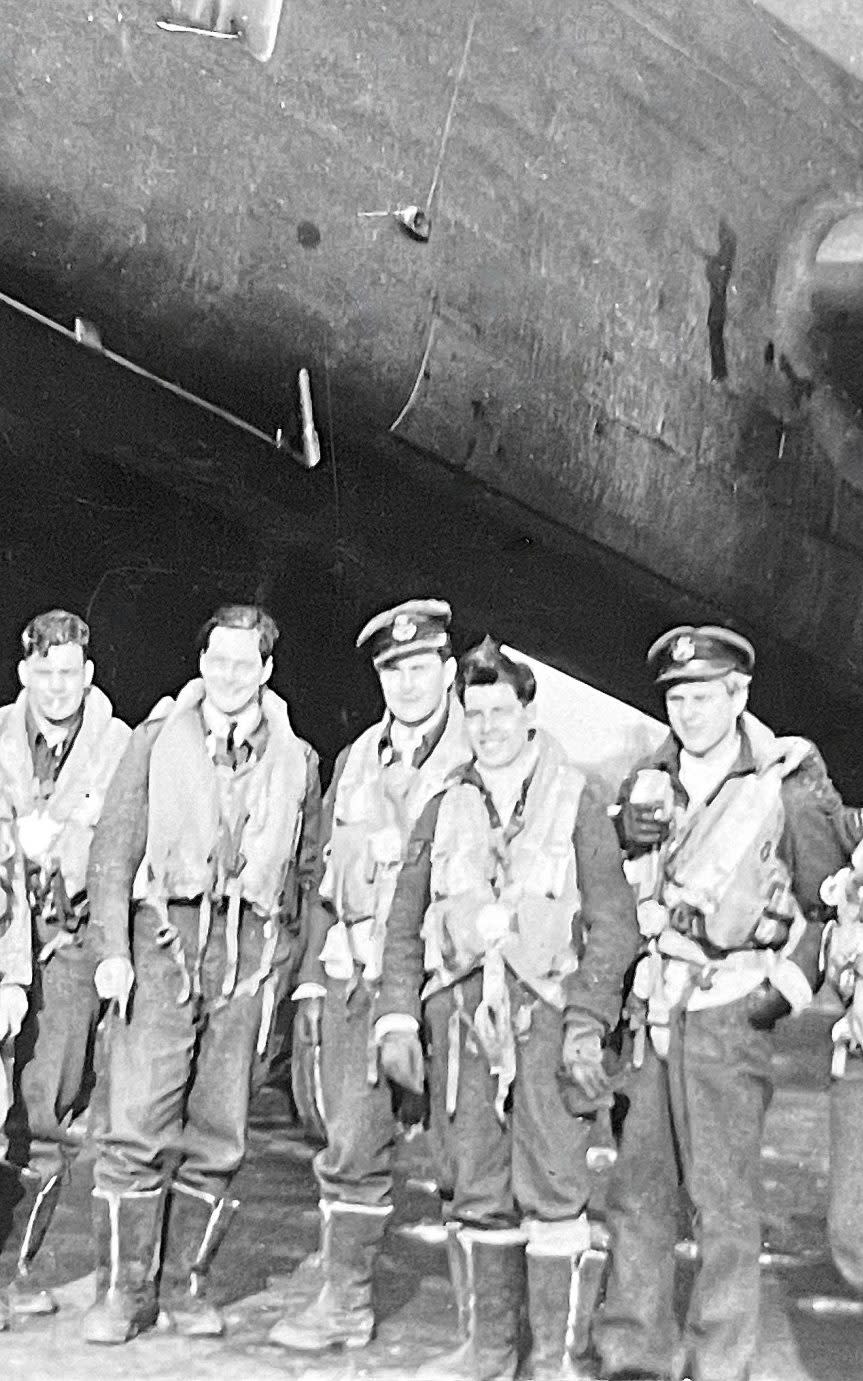Flight Lieutenant Peter Fischer, Danish airman who flew with Bomber Command attacking doodlebug launching ramps – obituary

Flight Lieutenant Peter Fischer, who has died aged 99, flew 52 operations with Bomber Command, the most by a Danish national.
Fischer joined his first squadron in May 1944 just as Bomber Command was beginning to support the Allied landings in Normandy. After two sorties, his crew was transferred to 35 Squadron, a Lancaster squadron in the Pathfinder Force.
Shortly after D-Day, the Germans began launching the first V-1 flying bombs against London from sites mainly in the Pas de Calais region. Bomber Command began a campaign of attacks against the launching ramps and the weapon-storage facilities.
Fischer was one of three Danish airmen to participate in these operations. His first operation was against the launch site at Saint-Philibert on July 14, and over the next few days, he attacked four similar targets.
His last operation against the V-1 threat was carried out on August 9, when the target was the storage site at Forêt de Nieppe south of Dunkirk. This was the first time the crew operated in the Pathfinder role, illuminating the target for the main bomber force. In early September, advancing Allied troops reached the last launch ramps that were within easy reach of London, and the immediate threat was over.
In the meantime, Fischer and his crew attacked targets in support of the ground operation in Normandy, including attacks against Caen, Saint-Lô, and in the Falaise area. By mid-August, the Allied forces had finally broken through the German defences andBomber Command were able to resume the strategic bombing campaign against Germany, still assisting ground forces from time to time.

The son of Danish parents living in London, Peter Frederik Fischer was born on July 6 1923. He attended Regent Street Polytechnic and entered Trinity College, Cambridge, in 1941 rowing in the first eight of the First and Third Trinity Boat Club in 1942. In February 1943 he was part of the Cambridge crew in the second unofficial wartime Oxford–Cambridge Boat Race, which Oxford won.
He volunteered to be a pilot in the RAFVR and enlisted on September 24 1943. It soon became clear that there was a surplus of pilots under training at that stage of the war so, anxious to see action, Fischer agreed to be an air gunner. He completed his training, was commissioned, and joined Flight Lieutenant Ken Gooch and his crew to convert to the Halifax bomber. In May 1944, they were posted to 10 Squadron.
By the end of the Normandy campaign, Fischer’s crew were well established in the Pathfinder role. A primary target thereafter was Germany’s oil industry, while the transportation system and tank and motor-vehicle production became a second priority. Only when weather or tactical conditions were unsuitable for missions against these targets would operations against important industrial areas take place.
Fischer took part in the daylight attack on the Nordstern synthetic oil factory in Gelsenkirchen. Two more attacks followed on the oil factories at Wanne-Eickel and Koblenz. In the New Year his crew marked numerous targets, including the synthetic oil factory at Leuna, near Leipzig.
In early 1945 the Air Ministry had developed Operation Thunderclap for a series of heavy raids against German cities in the east to disrupt the increasingly hard-pressed German war machine. With the Soviet army advancing from the east, it was decided to implement the plan with an attack against Dresden on the night of February 14/15, followed by an attack against Chemnitz. Fischer’s crew operated as a blind marker in the second wave on each mission.
On February 20 he took off on his final operation, when the target was Dortmund. He had flown 52 missions since joining 10 Squadron had completed more operations in Bomber Command than any other Dane and was awarded the DFC. His pilot, Ken Gooch, received a Bar to an earlier DFC.
After a period as an instructor at a bomber training unit, Fischer left for Germany, where he worked with a Missing Research and Enquiry Unit, responsible for searching, identifying and the reburial of those Missing in Action, a harrowing task.
Fischer trained as a teacher and moved to Canada, changing his name to Falstrup. He taught at St Paul’s School in Ottawa, where he resumed his interest in rowing. He later moved to California and taught at the Bishop’s School in La Jolla. He spent his final years on Coronado Island, a suburb of San Diego, where cycled into his early nineties.
Peter Fischer is survived by his third wife, Claire, and their son.
Peter Fischer, born July 6 1923, died December 4 2022

 Yahoo News
Yahoo News 
